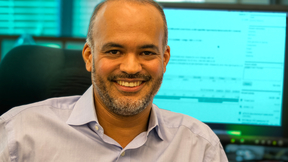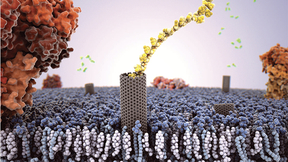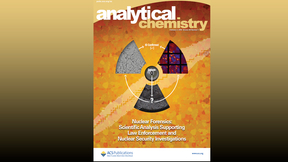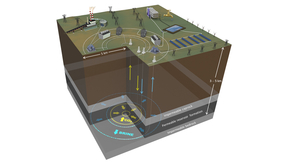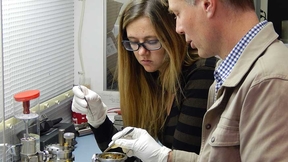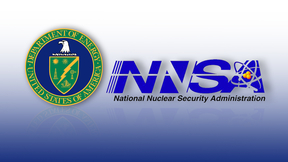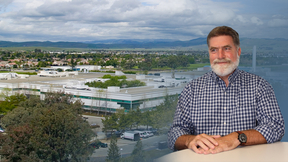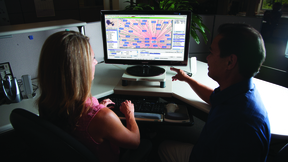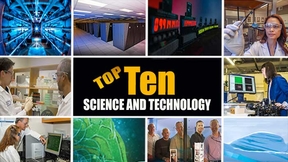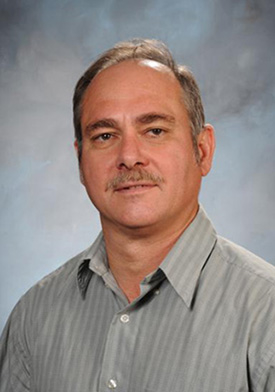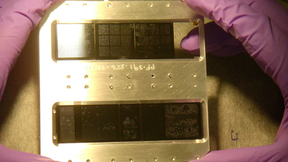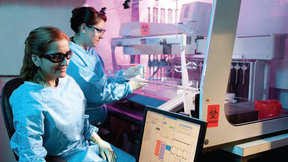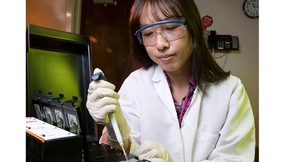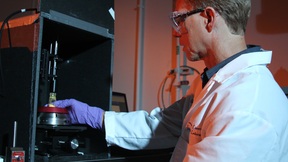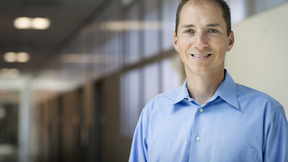Back
A Lab bioinformatics scientist has been selected to serve on a U.S. National Academies of Sciences, Engineering and Medicine panel that will study microbiomes in "built environments."Jonathan Allen, a researcher in Lawrence Livermore's Global Security Program, has been chosen to be part of the 15-member committee that will study microbiomes, or microbial communities of…
A simulation for drug-membrane permeability developed at LLNL increases the development speed for nerve-agent treatmentsImagine you wanted to know how much energy it took to bike up a mountain, but couldn’t finish the ride to the peak yourself. So, to get the total energy required, you and a team of friends strap energy meters to your bikes and ride the route in a relay,…
Two Laboratory scientists have teamed with Australian colleagues to author an overview of nuclear forensics that is featured as the cover story for the Feb. 2 edition of Analytical Chemistry magazine.LLNL analytical chemists Mike Kristo and Ruth Kips, in collaboration with three researchers from the Australian Nuclear Science and Technology Organisation (ANSTO), wrote the…
Meeting the Paris Climate Agreement goal of limiting the increase in the global average temperature to well below two degrees Celsius compared to pre-industrial levels will require increased use of renewable energy and reducing the CO2 intensity of fossil energy use.The intermittency of when the wind blows and when the sun shines is one of the biggest challenges impeding…
Two LLNL scientists are part of a scientific team that has been chosen as one of five finalists for a possible NASA Discovery Program mission.The two Livermore scientists, physicist Morgan Burks and nuclear engineer Lena Heffern, a graduate student, are teamed with researchers from The Johns Hopkins University Applied Physics Laboratory (JHUAPL) on a proposal to explore a…
The proven success of the Stockpile Stewardship Program (SSP) – which pushed the limits of modern science and engineering by requiring the transition from explosive nuclear weapons testing to what is effectively virtual nuclear testing – was celebrated Wednesday at a half-day public event hosted by the Department of Energy’s National Nuclear Security Administration (NNSA)…
Researchers from five laboratories and a private company recently spent two days in blistering 100 degree heat testing radiation detection technologies amidst cargo containers.The 15 researchers demonstrated the feasibility of using gamma-ray and neutron imaging detectors to identify radioactive materials using the Laboratory’s cargo container stack testbed."The purpose of…
Anne Harrington, the National Nuclear Security Administration's (NNSA) deputy administrator for Defense Nuclear Nonproliferation, recently presented the NNSA Excellence Medal to Leon Berzins for the successful Source Physics Experiment 4 Prime (SPE4) campaign at the Nevada National Security Site (NNSS).The experiments, designed to provide a better understanding of seismo…
With backing from national leadership and Lab management, the new director of the Center for Global Security Research (CGSR) hopes to expand the center’s influence and impact within and beyond the gates of LLNL.Brad Roberts, who started his job as the head of CGSR in late April, joined the Laboratory for two principal reasons."First, I am committed to helping to rebuild…
Government agencies, along with state and local governments, could receive a helping hand from a computer network security tool developed by Lawrence Livermore National Laboratory (LLNL) computer scientists and engineers. The LLNL software-based technology, known as the Network Mapping System (NeMS), has been licensed to Cambridge Global Advisors, a Washington, D.C.-area…
In 2014, Lawrence Livermore National Laboratory (LLNL) built on a 62-year tradition of translating basic science into technologies that ensure national security, address pressing real world problems and expand the boundaries of fundamental science.The top stories of the year are a reflection of the Laboratory’s ability to apply its core national security competencies to a…
Mark Hart, a scientist and engineer in Lawrence Livermore National Laboratory’s (LLNL) Defense Technologies Division, has been awarded the 2015 Surety Transformation Initiative (STI) Award from the National Nuclear Security Administration’s (NNSA) Enhanced Surety Program.The STI award aims to stimulate and encourage the development of potentially transformational nuclear…
LIVERMORE, Calif. - Lawrence Livermore National Laboratory (LLNL) scientist Steve Payne was recently selected as a fellow of SPIE, an international professional society for optics and photonics. Payne, an active SPIE participant since the mid-1980s, is the group leader for sensor materials and measurements in the Lab's Materials Sciences Division and is the associate…
The rain in Spain may lie mainly on the plain, but the location and intensity of that rain is changing not only in Spain but around the globe.A new study by Lawrence Livermore National Laboratory scientists shows that observed changes in global (ocean and land) precipitation are directly affected by human activities and cannot be explained by natural variability alone. The…
This is the first Science and Technology Center grant UB has received. With the grant, UB and its partner institutions will establish the Biology with X-ray Free Electron Lasers (BioXFEL) research center, headquartered in Buffalo. Lawrence Livermore National Laboratory (LLNL) is a partner institution of the BioXFEL center.The BioXFEL (pronounced bio-x-fell) center will…
Lawrence Livermore National Laboratory (LLNL) has again received recognition this year for its work to move breakthrough technologies into the commercial marketplace.Livermore researchers and tech transfer professionals garnered four awards in the Federal Laboratory Consortium's (FLC) Far West Regional competition.This year's awards, presented last week during the FLC's…
Over the last 50 years, scientists from Lawrence Livermore National Laboratory's (LLNL) Biosciences and Biotechnology Division (BBTD) have changed the world by being instrumental researchers on the Human Genome Project, developing high-tech devices to sort cells and analyze DNA and providing the science for federal programs to defend the nation from biological weapons…
A team of Lawrence Livermore National Laboratory (LLNL) researchers has pioneered the use of a long-standing technology for a new application -- analyzing the chemical composition of uranium samples.In a paper published as the cover story in the September edition of Applied Spectroscopy , the Laboratory scientists describe the first reported use of near-infrared…
Former Lawrence Fellow David Lobell , who has done groundbreaking work on the agricultural impacts of climate change, has received a MacArthur fellowship.He is among 24 individuals honored this year by the John D. and Catherine T. MacArthur Foundation , which recognizes exceptionally creative individuals with a track record of achievement and the potential for even more…
A Lawrence Livermore National Laboratory (LLNL)-developed biological detection technology has been employed as part of an international collaboration that has detected a virus in bladder cancers.The research, performed in conjunction with scientists from the University of Split in Croatia, LLNL and the University of Jordan in Amman is believed to be the first study to…

